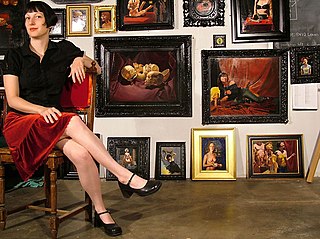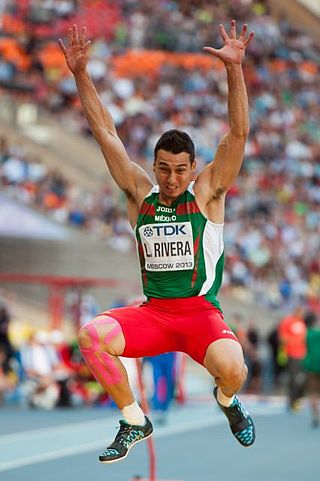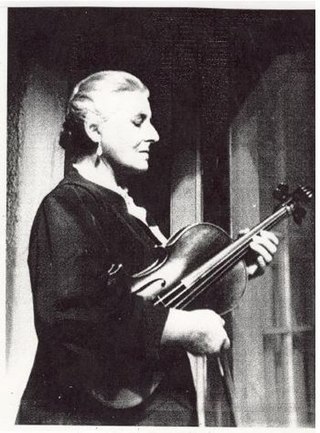Related Research Articles

Paolo Soleri was an American architect and urban planner. He established the educational Cosanti Foundation and Arcosanti. Soleri was a lecturer in the College of Architecture at Arizona State University and a National Design Award recipient in 2006. He coined the concept of 'arcology' – a synthesis of architecture and ecology as the philosophy of democratic society. He died at home of natural causes on 9 April 2013 at the age of 93.

Douglas is a city in Cochise County, Arizona, United States that lies in the north-west to south-east running Sulphur Springs Valley. Douglas has a border crossing with Mexico at Agua Prieta and a history of mining.

Scottsdale is a city in the eastern part of Maricopa County, Arizona, United States, and is part of the Phoenix metropolitan area. Named Scottsdale in 1894 after its founder Winfield Scott, a retired U.S. Army chaplain, the city was incorporated in 1951 with a population of 2,000. At the 2020 census, the population was 241,361, which had grown from 217,385 in 2010. Its slogan is "The West's Most Western Town". Over the past two decades, it has been one of the fastest growing cities and housing markets in the United States.
Agua Prieta is a town in Agua Prieta Municipality in the northeastern corner of the Mexican state of Sonora. It stands on the Mexico–U.S. border, adjacent to the town of Douglas, Arizona. The municipality covers an area of 3,631.65 km2. In the 2010 census the town had a population of 79,138 people, making it the seventh-largest community in the state, and a literacy rate of 96.3%.

Norma Elia Cantú is a Chicana postmodernist writer and the Murchison Professor in the Humanities at Trinity University in San Antonio, Texas.

Cochise College is a public college in Arizona. Founded on September 21, 1964, the school has campuses in Douglas and Sierra Vista, and centers in Benson, Fort Huachuca, and Willcox. Cochise College offers associate degrees in art, applied science, business, elementary education, general studies, and science, and over 30 different certificate programs. The college also offers transfer programs for students to transfer to partner universities.

Rachel Bess is an American artist working out of Phoenix, Arizona.

Effie Anderson Smith, also known as Mrs. A.Y. Smith, was an early Arizona impressionist painter of desert landscapes, many of Cochise County and the Grand Canyon.
The Agua Dulce Mountains are a mountain range in the north-central Sonoran Desert of southwestern Arizona. The range is located in the extreme southwestern portion of Pima County, Arizona, immediately north of the international boundary with Mexico and about 30 mi (48 km) southwest of Ajo, Arizona. The range has three main sections that total about 15 miles in length and about nine miles in width. The range is located entirely within the Cabeza Prieta National Wildlife Refuge. The highpoint of the range is 2,852 feet (869 m) above sea level and is located at 32°01'32"N, 113°08'44"W. The summit is unnamed, but is marked on U.S. Geological Survey (USGS) maps for the "Quitovaquita" benchmark that was placed on the summit in 1920. The original surveyed height was 2,850 feet above sea level, but recent datum adjustments calculate the summit to be two feet higher.

The San Bernardino Valley of Arizona is a 35 mi (56 km) northeast-by-southwest trending valley in extreme southeast Cochise County, Arizona. The north end of the valley merges into the northwest-by-southeast trending San Simon Valley; both merge in western perimeter Hidaldgo County, New Mexico. The valley is an asymmetric graben.

The Swisshelm Mountains are a small mountain range adjacent to the southwest corner of the Chiricahua Mountains of eastern Cochise County, Arizona. They are separated from the Pedrogosa Mountains to the southeast, the Chiricahuas to the northeast, and by Leslie Creek, bordering the south and east; the area is now notable for the Leslie Canyon National Wildlife Refuge.

The Arizona Sun Corridor, shortened Sun Corridor, is a megaregion, or megapolitan area, in the southern area of the U.S. state of Arizona - comprising approximately 85 percent of the state's population. The Sun Corridor is comparable to Indiana in both size and population. It is one of the fastest growing conurbations in the country and is speculated to double its population by 2040. The largest metropolitan areas are the Phoenix metropolitan area – Valley of the Sun, and the Tucson metropolitan area – The Old Pueblo. The regions' populace is nestled in the valley of a desert environment. Similar to Southern California, the urban area extends into Mexico, reaching the communities of Heroica Nogales and Agua Prieta.

Luis Alberto Rivera Morales is a Mexican long jumper. He won a bronze medal at the 2013 World Championships and a gold medal at the 2013 Summer Universiade. He also competed at the 2012 Summer Olympics. His personal best is 8.46 metres, achieved in July 2013.

Susan Harnly Peterson was an American artist, ceramics teacher, author and professor.

Louise Lincoln Kerr was an American musician, composer, and philanthropist from Cleveland, Ohio. She wrote over 100 music compositions including fifteen symphonic tone poems, twenty works for chamber or string orchestra, a violin concerto, five ballets and incidental music, numerous piano pieces, and about forty pieces of chamber music. She was known as "The Grand Lady of Music" for her patronage of the arts. Louise Kerr helped to co-found and developed The Phoenix Symphony (1947), The Phoenix Chamber Music Society (1960), The Scottsdale Center for the Arts, The National Society of Arts and Letters (1944), Monday Morning Musicals, The Bach and Madrigal Society (1958), Young Audiences, The Musicians Club, and the Phoenix Cello Society. Kerr was also a benefactor to the Herberger School of Music at Arizona State University. She was inducted into the Arizona Women's Hall of Fame on October 21, 2004 and was nominated by conductor and musicologist Carolyn Waters Broe.

Whitewater Draw, originally Rio de Agua Prieta, [Spanish: river of dark water], is a tributary stream of the Rio de Agua Prieta in Cochise County, Arizona. It was called Blackwater Creek by Philip St. George Cooke when his command, the Mormon Battalion, camped at a spring on its course on December 5, 1846.

Guadalupe Canyon is a canyon and valley in the southern portion of the Peloncillo Mountains Hidalgo County, New Mexico, Cochise County, Arizona and Agua Prieta Municipality, of Sonora. The waters of Guadalupe Canyon are tributary to the San Bernardino River joining it at its mouth at 31°13′33″N109°16′10″W just below Dieciocho de Augusto, Sonora. Its source is at 31°28′08″N109°02′21″W at an elevation of 6,160 feet on the south slope of Guadalupe Mountain. It crosses the border into Mexico at 31°19′57″N109°05′19″W at an elevation of 4,173 feet / 1,272 meters.
Zoë Marieh Urness is a photographer of Alaskan Tlingit and Cherokee Native American heritage. She creates portraits of modern Indigenous cultures in traditional regalia and settings.
Ana Teresa Fernández is a Mexican performance artist and painter. She was born in Tampico, Tamaulipas, and currently lives and works in San Francisco. After migrating to the United States with her family at 11 years old, Fernández attended the San Francisco Art Institute, where she earned bachelor's and master's of fine arts degrees. Fernández's pieces focus on "psychological, physical and sociopolitical" themes while analyzing "gender, race, and class" through her artwork.
Cristóbal Martínez is a Chicano artist and the founder of Radio Healer, an indigenous hacker collective. He is a member of Postcommodity, a Southwest Native American Artist collective. His work was featured in the 17th Whitney Biennial, 57th Carnegie International, and the Sundance Film Festival.
References
- ↑ "Celebran con éxito la 4ta. edición de Dream Across Border". Instituto Sonorense de Cultura. Retrieved 5 November 2020.
- 1 2 "M. Jenea Sanchez: Brown Rise". This Works Differently. 2017.
- ↑ "Our Team: M. Jenea Sanchez." Border Arts Corridor (BAC), https://www.bacaz.org/en/about
- ↑ "Digital Media Arts: Cochise College". Cochise.edu. 30 October 2020. Retrieved 5 November 2020.
- ↑ "Ein Jahr Trump: Die 'Obamas' von der Grenze / One Year Trump: the 'Obamas' of the Border". YouTube.com. Der Spiegel Online YouTube Channel. 15 January 2018. Retrieved 5 November 2020.
- ↑ "Push Comes to Shove: Women and Power". Scottsdale Museum of Contemporary Art. 2017.
- ↑ "Other Target/s". MutualArt.com - The Web's Largest Art Information Service. 2020.
- ↑ "The University of Arizona Museum of Art: Collaboration as a Strategy for Disruption". The University of Arizona Museum of Art. Retrieved 5 November 2020.
- ↑ "M. Jenea Sanchez". Arizona Commission on the Arts. 15 October 2018. Retrieved 5 November 2020.
- ↑ Wallace, Michelle. "15 Minutes with M. Jenea Sanchez: Weaving Community Through Art," Catapult. 18 Jan. 2017. https://catapult.co/stories/15-minutes-with-m-jenea-sanchez
- ↑ BWW News Desk. "31 Latinx Arts Leaders Selected For NALAC Leadership Institute In San Antonio". Broadway World San Antonio. Retrieved 5 November 2020.
- ↑ "Jenea Sanchez: Presenting & Multidisciplinary Works, Douglas, AZ". NALAC.org. 20 July 2019. Retrieved 5 November 2020.
- ↑ "Confluencenter Creative Scholars Rewrite the Border Narrative through Art". The University of Arizona Confluence Center for Creative Inquiry. 4 February 2020. Retrieved 5 November 2020.